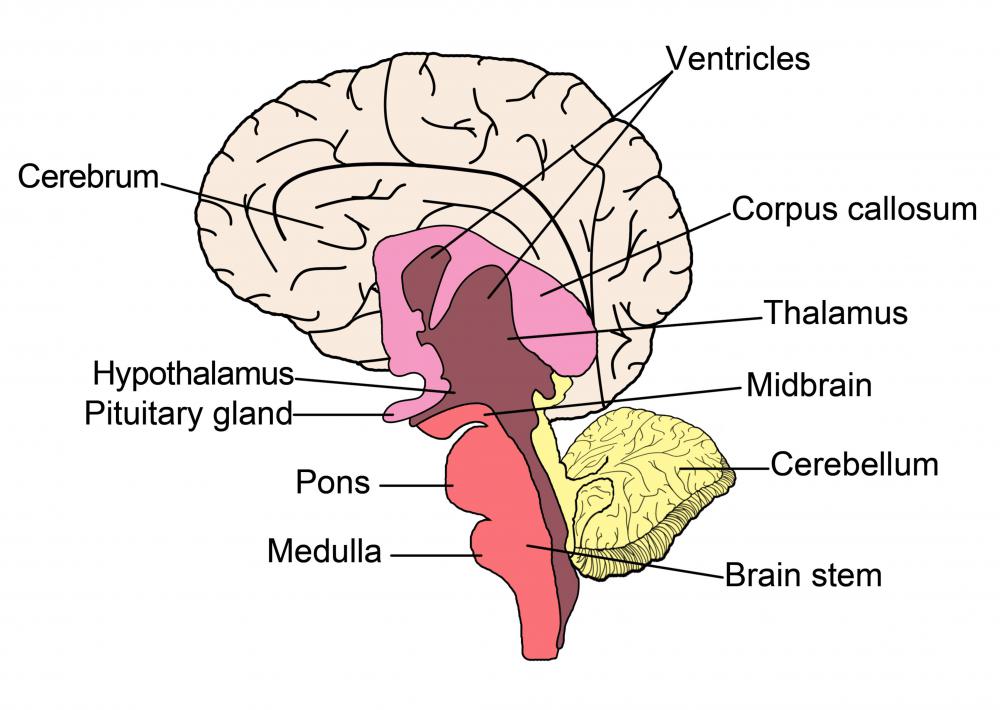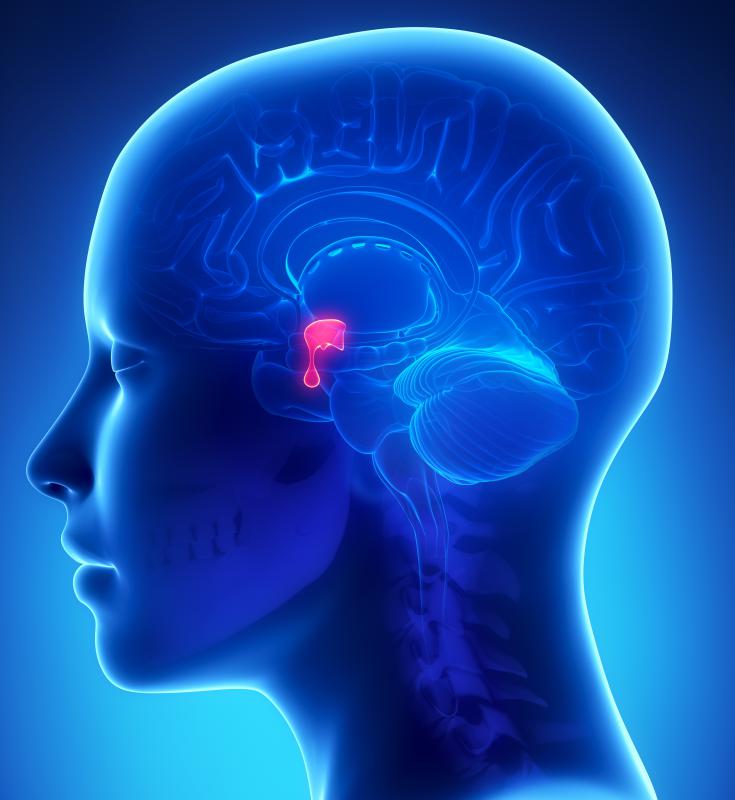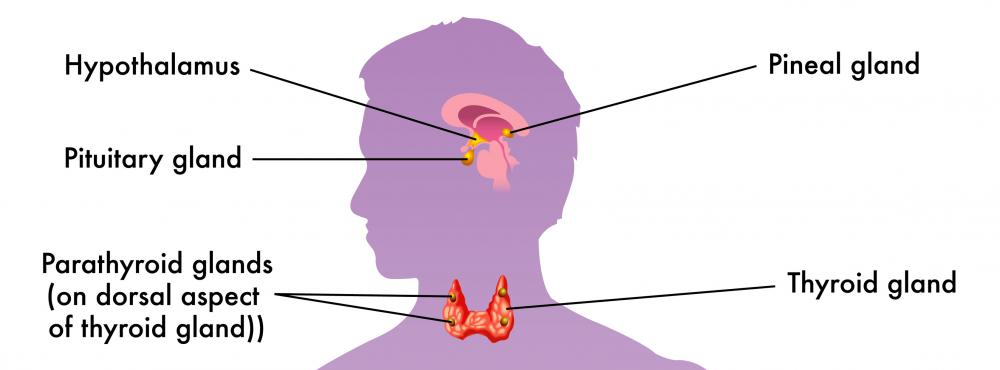At WiseGEEK, we're committed to delivering accurate, trustworthy information. Our expert-authored content is rigorously fact-checked and sourced from credible authorities. Discover how we uphold the highest standards in providing you with reliable knowledge.
What Is the Anatomy of the Pituitary Gland?
Controlled directly by the hypothalamus, the pituitary gland is composed of different areas that secrete hormones, controlling various bodily processes. The anatomy of the pituitary gland, technically termed the hypophysis, has three lobes as part of a bean sized structure; an anterior, intermediate, and posterior lobe. Each produces a separate set of hormones while making up a different structural component of the gland. The anterior pituitary gland is called the adenohypophysis while the posterior pituitary is referred to as the neurohpophysis. A bundle of nerve fibers are routed through the posterior section which passes behind the anterior pituitary; nerve axons from the hypothalamus then enter the anterior section.
Although they are intricately connected in the anatomy of the pituitary gland, the anterior and posterior segments originate from different regions of an embryo. They are nonetheless intricately connected by a network of nerve cells and blood vessels. Hormones from the hypothalamus enter the blood through the hypophyseal artery and into various capillaries leading to hypothalamic-hypophyseal portal veins. These branch into a web of capillaries in the anterior pituitary gland, where pituitary hormones enter from both sections and into the general blood circulation. The vascular structure also enables hormones from the hypothalamus to enter the anterior pituitary, but not filter out into the general blood supply.

The main function of the pituitary gland is to release hormones into the body from the brain. Its anterior lobe produces the most hormones in the pituitary gland anatomy, including ones for growth, milk production, and to stimulate adrenal glands and the thyroid. Other hormones that are directed to the ovaries and testes are also produced. The intermediate lobe of the pituitary gland releases a substance to stimulate melanocytes that control the pigmentation of skin. In the posterior lobe, a hormone that enables the kidneys to raise the level of absorption of water into blood is produced, as well as one that controls uterus contractions and milk production.

With a microscope, the anatomy of the pituitary gland is seen to consist of three cell types. Acidophils, basophils, and chromophobes are differentiated by their chemical composition and the hormones present within each cell. The pituitary gland is situated at the base of the brain within the sella turcica, a depression at the base of the skull. Distinct in structure and composition, pituitary gland anatomy enables the gland to send the necessary signals to every other gland in the endocrine system, to control many functions.
AS FEATURED ON:
AS FEATURED ON:















Discuss this Article
Post your comments